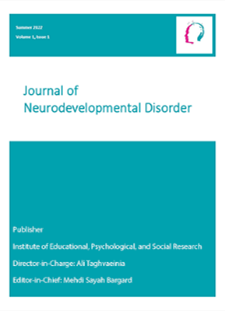Comparison of the Effectiveness of Integrating Acceptance and Commitment Therapy with Pharmacotherapy and Integrating Emotional Schema Therapy with Pharmacotherapy on Quality of Life and Symptoms in Patients with Fibromyalgia
Keywords:
Fibromyalgia, Quality of Life, Fibromyalgia Symptoms, Pharmacotherapy, Acceptance and Commitment Therapy, Emotional Schema TherapyAbstract
Purpose: The present study aimed to compare the effectiveness of acceptance and commitment therapy (ACT), emotional schema therapy, and pharmacotherapy on the quality of life and symptoms of patients with fibromyalgia.
Methods and Materials: This semi-experimental study employed a pretest-posttest design with two experimental groups and one control group. From the population of women with fibromyalgia in Tehran, 51 participants were selected through convenience sampling and randomly assigned to three research groups. To assess quality of life, the SF-36 questionnaire was used, including two subscales: Physical Component Summary (PCS) and Mental Component Summary (MCS). Montazeri et al. reported its reliability to range between 0.77 and 0.90. The Fibromyalgia Impact Questionnaire-Revised (FIQR), which measures functioning, overall impact, and symptom severity, was used to assess symptoms. Moini et al. (2015) reported the reliability of this questionnaire as 0.82. The experimental groups received either ACT combined with pharmacotherapy, or emotional schema therapy combined with pharmacotherapy, while the control group received only pharmacotherapy. Data were analyzed using repeated measures analysis and post-hoc tests.
Findings: Compared to pharmacotherapy alone, the integration of acceptance and commitment therapy with pharmacotherapy significantly improved psychological well-being and fibromyalgia symptoms in patients with fibromyalgia (P < 0.01). Similarly, compared to pharmacotherapy alone, the integration of emotional schema therapy with pharmacotherapy improved psychological well-being in patients with fibromyalgia (P < 0.01), although physical health did not change and symptoms were reduced. However, the difference between the effects of emotional schema therapy combined with pharmacotherapy and ACT combined with pharmacotherapy on either dimension of quality of life or symptoms was not statistically significant (P > 0.05).
Conclusion: Considering the effectiveness of both ACT and emotional schema therapy in improving quality of life and reducing disease symptoms, and given the absence of significant differences between the two therapeutic methods, both ACT and emotional schema therapy can be used in combination with pharmacotherapy to enhance quality of life and reduce symptoms in patients.
Downloads
Downloads
Published
Submitted
Revised
Accepted
Issue
Section
License
Copyright (c) 2025 Zahra Dadbin, Neda Alibeygi, Kamran Azma, Fariborz Bagheri (Author)

This work is licensed under a Creative Commons Attribution-NonCommercial 4.0 International License.













